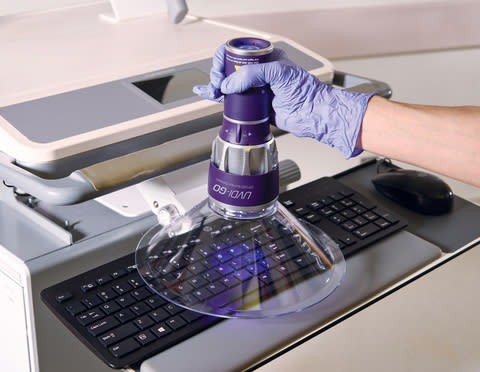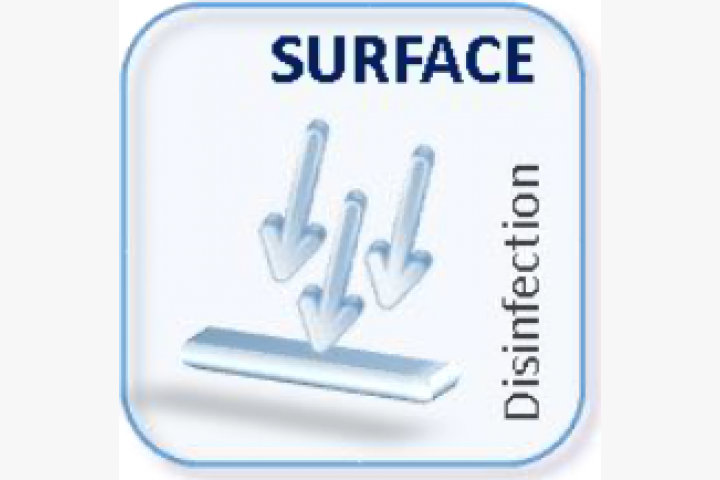Taking Advantage Of the Potential of UV Sanitation: Shielding Health and Health
UV disinfection, an innovation extensively utilized in different industries, has confirmed effective in eliminating harmful virus. From understanding the systems at play to implementing this modern technology in our daily lives, this conversation intends to shed light on the capacity of UV sanitation and its role in protecting our wellness and hygiene.
Understanding UV Sanitation
UV sanitation is a highly efficient and extensively utilized approach for removing dangerous pathogens and guaranteeing wellness and health. This technique makes use of ultraviolet (UV) light to inactivate bacteria by damaging their DNA and preventing them from duplicating. UV disinfection is particularly reliable against microorganisms, viruses, and various other microbes that can trigger diseases and infections.
The concept behind UV disinfection is simple yet effective. UV disinfection can be applied in numerous settings, including water therapy plants, health care facilities, food handling industries, and air filtration systems.
Among the advantages of UV sanitation is its capability to effectively and successfully get rid of a variety of microorganisms without the need for additives or chemicals. Unlike other sanitation techniques, such as chlorine or ozone, UV disinfection does not present unsafe byproducts or chemical deposits into the setting. In addition, UV disinfection is a non-contact procedure, which indicates that it does not require physical call with the microbes, lessening the threat of cross-contamination.
The Scientific Research Behind UV Disinfection
The performance of UV disinfection lies in its capability to interfere with the hereditary product of bacteria, rendering them not able to replicate and therefore eliminating their harmful possibility. UV, or ultraviolet, radiation is a form of electromagnetic radiation with wavelengths much shorter than noticeable light. It is categorized into 3 kinds: UV-A, UV-B, and UV-C. UV-C radiation, particularly, has the fastest wavelength and the highest possible energy. This high-energy UV-C radiation is most reliable in disinfection applications since it can pass through the cell wall surfaces of bacteria and harm their DNA or RNA.
When bacteria are subjected to UV-C radiation, the energy is taken in by their hereditary product, causing bonds to break and developing chain reactions that disrupt their ability to recreate. This protects against the bacteria from reproducing and spreading out infection. UV disinfection is especially reliable against fungi, viruses, and microorganisms, consisting of typical pathogens such as Escherichia coli, Salmonella, and Influenza.
The scientific research behind UV disinfection is supported by extensive study and research studies. It has been revealed that direct exposure to an adequate dose of UV-C radiation can attain a high degree of disinfection, frequently exceeding 99.9% efficiency in killing microbes. It is vital to note that the performance of UV disinfection depends on various aspects, including the strength of UV-C radiation, exposure time, range from the UV source, and the vulnerability of the microorganism to UV radiation (uv surface disinfection).
Applications of UV Sanitation
Given the substantial research and efficiency of UV disinfection in interrupting the genetic material of microbes, it is essential to explore the numerous useful applications of this modern technology. UV sanitation has confirmed to be a valuable device in a vast array of industries where maintaining a clean and secure environment is vital.
One significant application of UV sanitation is in medical care setups. UV light can be used to sanitize surface areas, tools, and even the air in healthcare facilities and clinical centers. This helps to minimize the threat of healthcare-associated infections and ensures a safer atmosphere for people and healthcare workers.
One more crucial application remains in the food and drink sector. UV disinfection is used to treat water and get rid of unsafe pathogens, such as E. coli and Salmonella, from the production process. uv surface disinfection. This makes sure the security and top quality of the items we consume
UV disinfection is additionally extensively used in water treatment plants and wastewater therapy centers. It is an effective method for damaging hazardous germs, infections, and bloodsuckers that can be existing in water resources. This helps to supply safe and clean alcohol consumption water to areas and safeguard the setting from air pollution.
Furthermore, UV sanitation is used in the pharmaceutical industry to sanitize equipment and keep anonymous the integrity of items. It is additionally used in laboratories and study facilities to stop contamination and guarantee precise outcomes.
Advantages of UV Disinfection Technology
One noteworthy benefit of utilizing UV disinfection technology is its capability to successfully get rid of bacteria without the use of extreme chemicals. This is specifically helpful in different settings, such as medical care facilities, water treatment plants, and food processing sectors, where the existence of dangerous microorganisms poses a substantial danger to public health and wellness and safety.
Unlike typical disinfection methods that depend on chemicals like chlorine or ozone, UV disinfection modern technology uses ultraviolet light to target and destroy the DNA of microbes, successfully neutralizing their capability to recreate and create infections. This process not just gets rid of the demand for potentially hazardous chemicals but additionally minimizes the risk of chemical deposit or by-products staying in the treated setting.

Furthermore, UV disinfection innovation is eco friendly. As it does not depend on the usage of chemicals, it eliminates the requirement for their production, disposal, and transportation, lowering the overall carbon footprint connected with sanitation procedures. In addition, UV disinfection systems have a longer life-span contrasted to chemical-based approaches, causing less frequent replacement and additional minimizing waste.
Applying UV Sanitation in Daily Life
To efficiently execute UV disinfection in life, individuals and organizations can incorporate portable UV sanitizing devices into their hygiene routines and cleaning up methods. These gadgets are made to emit ultraviolet light, which has been proven to kill or inactivate a wide variety of microorganisms, including infections, fungis, and bacteria. By using portable UV sanitizing devices, individuals can decontaminate commonly touched items and surface areas, such as cell phones, laptop computers, secrets, and doorknobs, lowering the danger of spreading out germs and infections.
Along with integrating mobile UV sterilizing devices, it is necessary to follow correct guidelines and referrals for effective UV sanitation. This includes making certain that the device is made use of correctly and for the advised duration to accomplish optimal sanitation outcomes. It is also crucial to focus on precaution, such as putting on protective glasses and avoiding direct exposure of the UV light to the skin.

Additionally, organizations can execute UV disinfection innovation in different settings to enhance hygiene techniques. For example, hospitals and healthcare centers can make use of UV sanitation robots to sterilize client spaces, operating movie theaters, and various other high-touch locations. Food processing markets can integrate UV disinfection systems right into their assembly line to boost food safety and security and protect against contamination.
Conclusion
In final thought, UV disinfection innovation holds terrific potential in guarding health and wellness and hygiene. With Discover More Here its countless benefits, UV disinfection is a valuable tool for maintaining a tidy and healthy setting.
Unlike other sanitation approaches, such as chlorine or ozone, UV disinfection does not present harmful byproducts or chemical deposits into the atmosphere. It is vital to note that the efficiency of UV sanitation depends on numerous elements, consisting of the intensity of UV-C radiation, direct exposure time, range from the UV resource, and the vulnerability of the microbe to UV radiation.
An additional advantage of UV sanitation technology is its capability to provide constant and quick disinfection. Unlike handbook cleaning methods, which can be taxing and require significant labor, UV disinfection systems can be automated and run continually, guaranteeing constant sanitation without human treatment.To effectively execute UV disinfection in everyday life, people and companies can integrate mobile UV sterilizing devices into their hygiene routines and cleaning methods.
Comments on “UV Surface Disinfection Techniques: Making Best Use Of Effectiveness for Germ-Free Spaces”